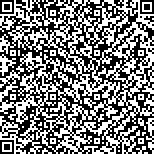禄熠行,孙妙巧,吴相波,等.脊髓损伤患者入院合并泌尿系感染危险因素的回顾性研究[J].中华物理医学与康复杂志,2023,45(5):423-428
扫码阅读全文

|
| 脊髓损伤患者入院合并泌尿系感染危险因素的回顾性研究 |
|
| |
| DOI:10.3760/cma.j.issn.0254-1424.2023.05.008 |
| 中文关键词: 脊髓损伤 泌尿系感染 危险因素 |
| 英文关键词: Spinal cord injury Urinary tract infection Risk factors |
| 基金项目:国家自然科学基金(82272591, 82072534) |
|
| 摘要点击次数: 4454 |
| 全文下载次数: 4371 |
| 中文摘要: |
| 目的 探讨脊髓损伤(SCI)患者入院合并泌尿系感染(UTI)的危险因素。 方法 回顾性分析空军军医大学第一附属医院康复医学科2017年8月至2022年6月收入院的403例SCI患者资料。按入院时是否合并UTI分为UTI组和非UTI组。分别比较两组患者的性别、年龄、损伤原因、损伤节段、肛门自主收缩情况、发病至入院时间、美国脊髓损伤协会(ASIA)分级、入院体温、合并症(糖尿病、高血压、骨盆骨折、压疮、贫血)、实验室检查结果(血白细胞、尿细菌定量)等相关指标。采用二元Logistic回归分析筛选SCI患者入院时合并UTI的危险因素。 结果 在最终纳入的354例患者中,有62例患者(17.51%)入院时合并UTI。二元Logistic回归分析结果显示,SCI患者入院时合并UTI与肛门自主收缩消失[OR=3.305,95%CI(1.472,7.421), P=0.004]、发热[OR=5.027,95%CI(1.606,15.738),P=0.006]、贫血[OR=2.522, 95%CI(1.309, 4.856), P=0.006]、血白细胞升高[OR=3.367, 95%CI(1.641, 6.910), P<0.001]、高尿细菌定量[OR=5.970, 95%CI(2.753, 12.945), P<0.001]有关。 结论 肛门自主收缩消失、发热、贫血、血白细胞升高、高尿细菌定量是SCI患者入院时合并UTI的独立危险因素,其中发热(腋温≥37.3 ℃)和高尿细菌定量(尿细菌定量≥1266.9个/μl)是风险较高的两个因素。 |
| 英文摘要: |
| Objective To explore the risk factors for urinary tract infection (UTI) after a spinal cord injury (SCI). Methods The medical records of 403 SCI patients were analyzed retrospectively. They were divided into UTI group and no-UTI group according to whether they had a UTI at admission. Gender, age, cause of injury, injury level of the spinal cord, voluntary anal contraction, time from injury to admission, American Spinal Injury Association (ASIA) grade, axillary temperature at admission, complications at admission (diabetes, hypertension, fracture of the pelvis, pressure sores or anemia), white blood cell count and urinary bacteria were compared between the two groups. Binary logistic regression was used to highlight the risk factors for a UTI after an SCI. Results Of the 354 patients included in the final analysis, 62 (17.51%) had a UTI at admission. The regression showed that UTI after an SCI was closely related to an inability to voluntarily contract the anus, anemia, elevated white blood cell count and a high level of bacteria in the urine. Conclusions Inability to contract the anus, fever, anemia and an elevated white blood cell count are independent indicators of a UTI after an SCI. A temperature ≥37.3°C is a simple indicator of a concentration of bacteria in the urine ≥1266/μL. |
|
查看全文
查看/发表评论 下载PDF阅读器 |
| 关闭 |
|
|
|